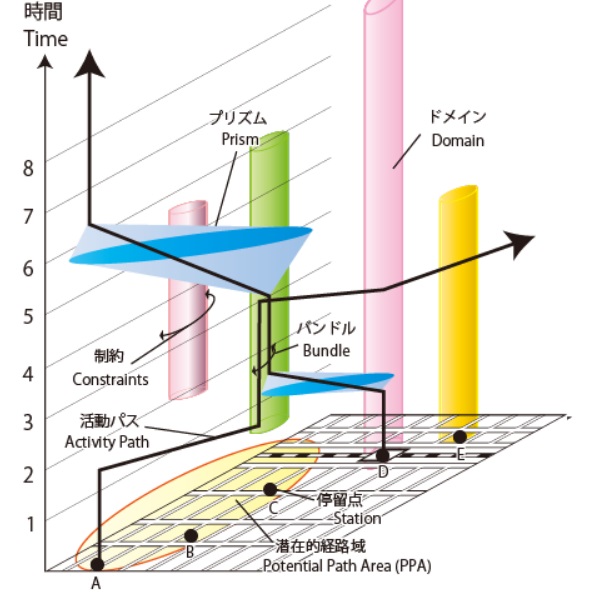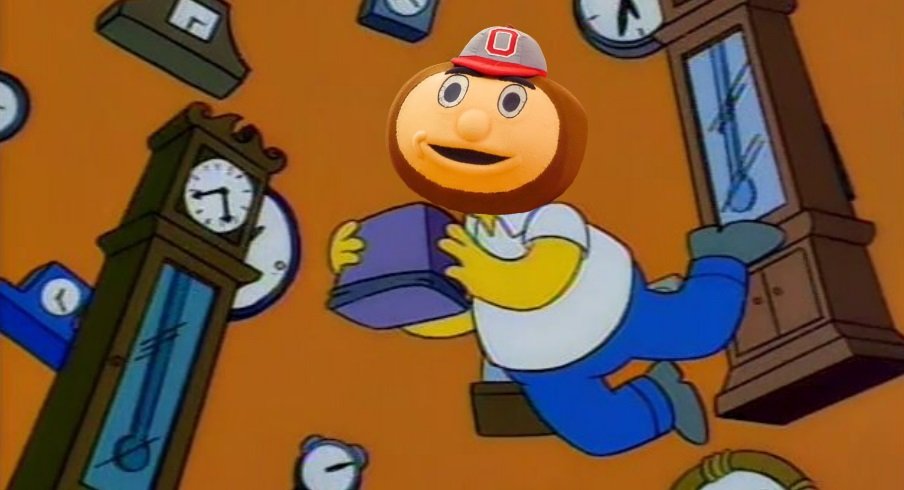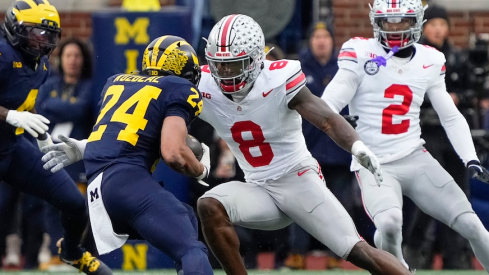"I don't really care about watching men's basketball until like the last five minutes of the game," my wife said.
"Why?" I responded. "College basketball is cool and good, and March Madness is really cool and good."
"Because," she said, "there's no point in watching like 90% of the game. Either it's a blowout or the teams are almost tied, so what's the point in sitting through the first hour and a half or so?"
"Well, uh, because the flow... of the game is, uhhhhhh really important so you can kind of see um, how a team might do in the last minute. Or whatever, cool shit happens! That's why!"
Let's talk about the geography of time.
Here's (part of) a handy summary of the concept, written by professor Kajsa Ellegård:
Time geography is an integrative approach to studying the coordination of human activities in society and nature.
...
In its bare form, the path helps analyze peoples’ approaches and departures to and from each other, as well as the duration of activities and movements between, and stays at, places. But the path does not grant an inside perspective on peoples’ wishes and motives. Time geography differs from most social science approaches in its adherence to the indivisible individual, which implies that an individual can’t be averaged. This bottom-up perspective also implies that some meaning is expressed by the mere sequence of individuals’ daily activities.
Okay. That's weird, I know. Here's the best, incredibly unauthoritative, way I can put it, drawn from my minor in Geography, a college class that I took a decade and a half ago, and my garbage brain that's making up a lot of this as I go (any actual geographers out there please don't kill me):

Think about how long it takes you to go to the grocery store, from the time that you leave where you live to the time that you get back home. If you live in a city and have access to easy transportation, your reckoning of what the "going to the grocery store" experience is like is way different than the "going to the grocery store" experience of someone who, say, lives in the country, 30-40 minutes away from the store, or someone without access to transportation, and so on.
The measurement and understanding of that difference and how we temporally understand spatial movement within our lives is the geography of time.
It's important as part of our understanding how various political and economic systems interact with each other, and it's also important for a Blog written on the Internet by a certified Big Weirdo about Sports.
Ellegård also writes:
Data collection on daily activities gains from technologies like the Global Positioning System (GPS) and information and communication technology (ICT) devices. Computers facilitate analyses of large data sets, which are important in many empirical time-geographical studies.
Which is cool, I guess, but I'd argue that the kind of data that is required for a complete analysis would be unethical to obtain in its entirety; while we have the technology to track the movement of individuals for pretty much any action at this point, monitoring how many steps it takes me on average to hork down a chalupa after I leave the doors of the Taco Bell seems a bit invasive.
Plus, things like construction and weather and all kinds of other factors make consistency of the data a big pain in the ass.
But what if we had a group of people conducting a singular, rules-based activity at a uniform location for a predetermined length of time?
Like, say, the Ohio State football team. Or the men's basketball team. Using the geography of time, could we figure out when its optimal to actually pay attention to their games based on a few common factors. But what should this look like?
Well, if you're not great at math but good at half-assing stuff in Photoshop, you could be able to plot out what I like to call an "attention-span map" that theoretically gauges what your interest level (your "experience") would be in said activity, and it might look something like the following:
OHIO STATE FOOTBALL VERSUS A MID-TIER BIG TEN OPPONENT

Scarlet represents interest, and that means the action and movement you're seeing on the field of play generates a desire to closely watch what's going on. Gray represents a lack of interest, and that means that the action and movement you're seeing on the field of play does not generate a desire to closely watch what's going on. The numbers are explained below:
- General initial excitement about football. Ohio State is doing sweet stuff like jet sweeps, flea flickers, and playaction/option combos.
- Post-halftime slump. You're sleepy, and so are the players and coaching staff. Plays become repetitive as you watch a QB sneak up the gut for the 13289128th time.
- Post-halftime slump has led to a closer than anticipated game. Now you're invested and alert, but also annoyed. Pace and action on the field of play increases as the Buckeyes remember they're supposed to win. They do, but you're vaguely pissed.
See? It's simple; spatial movement on the field of play can be monitored to collect useful data about our feelings toward Ohio State sports. Here's another one:
OHIO STATE FOOTBALL VERSUS FLORIDA A&M OR SOME JUNK

- General initial excitement about football. Seven touchdowns are scored in first 10 minutes of the game.
- Everyone in the stadium collectively checks their watch. There's still several hours left in the game. Everyone, including the players, coaches, and fans, pace themselves accordingly.
- You wake up from your nap to see a third-string running back score his second touchdown. Neat!
- Everyone falls back asleep. Movement on the field resembles the heat death of the universe.
- TV producers train their cameras on the players singing "Carmen, Ohio." You feel a sense of contentment.
Now let's try the 2018-2019 men's basketball team. The majority of the season went something like this:
OHIO STATE MEN'S BASKETBALL IN GAMES THAT MATTER WHICH THEY LOST
- Fifty consecutive missed shots. Kalben Wesson has four personal fouls with six minutes left in the first half. They're screwed.
- Wait! Three consecutive made shots! Maybe they aren't screwed! Are they gonna do it?!
- No, they are not.
OHIO STATE MEN'S BASKETBALL IN GAMES THAT MATTER WHICH THEY WON
- Fifty consecutive missed shots. Kaleb Wesson only has three personal fouls with six minutes left in the first half. They're screwed.
- Wait! Three consecutive made shots! Maybe they aren't screwed! Are they gonna do it?!
- No, they are not gonna do it.
- Wait, yes. They did do it. Huh.
This data really shows the distinct difference between what I call "spatial talent," or, in other words, the ability of the movement of athletes on the field of play to motivate people to watch game in specific ways. Though there's a lot of lack of interest during some Ohio State football blowouts, that's a function of them being just so damn good.
The lack of interest happens in men's basketball too, but right now it's a function of them not being that damn good.
However! Chris Holtmann willing his team over the finish line and past the first round of the NCAA tournament was nothing short of heroic. That last win against Iowa State was incredible to watch, not necessarily because of the product on the court, but because of the improbability of the win.
I believe that Holtmann and company will eventually get there; to that lofty place in the clouds where their talent is so extreme that it looks similar to Ohio State football in terms of our interest level.
And while they do, we'll be keeping track of their movements through space and time.
Please leave your Wendy's drive-through/Ted Talks jokes below in the comment section. If professor Ellegård somehow ever reads this, I both apologize and also insist that if you want to cite me in any future academic publishings, I require a check for 15 thousand Swedish krona.




